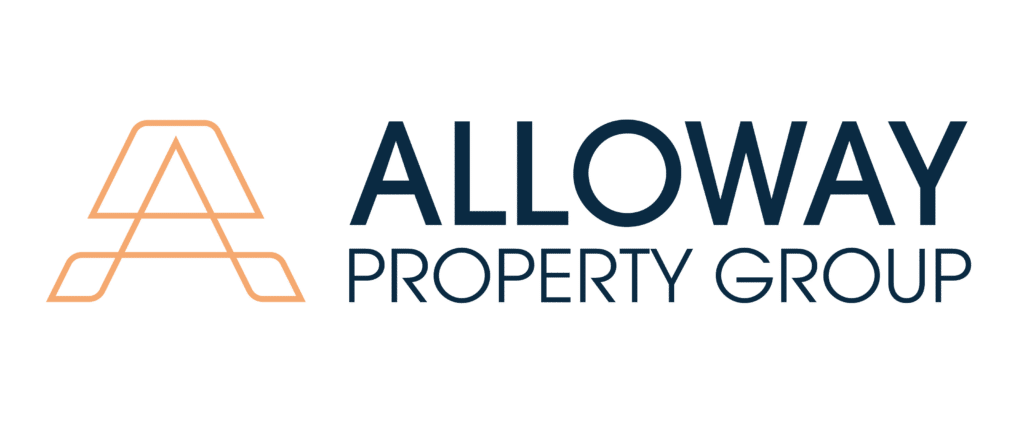An official plan is a crucial document that outlines the future development and land use in a community. It serves as a guide for decision-making and plays a significant role in shaping the built environment. If you want to navigate through the complexities of an official plan, it is essential to gain a comprehensive understanding of its purpose, key elements, and how it influences various aspects of community planning and development.
What is an Official Plan?
An official plan is a statutory document that provides policy direction and guidelines for land use and development within a municipality or jurisdiction. It is typically prepared and approved by the local government, often with extensive public input and consultation. The official plan serves as a blueprint for future growth and development, taking into account factors such as population growth, infrastructure needs, environmental considerations, and economic goals.
When creating an official plan, municipalities consider a wide range of factors to ensure the long-term sustainability and livability of the community. These factors may include the preservation of natural resources, the promotion of affordable housing, the enhancement of transportation networks, and the provision of public amenities. By addressing these issues in the official plan, municipalities can effectively manage growth and development, creating a vibrant and inclusive community for residents.
The process of developing an official plan involves collaboration between various stakeholders, including government officials, urban planners, community organizations, and residents. Through public consultations, citizens have the opportunity to voice their opinions and contribute to the decision-making process. This participatory approach ensures that the official plan reflects the needs and aspirations of the community as a whole.
The Purpose of an Official Plan
The primary purpose of an official plan is to establish a framework for managing land use and development within a community. It sets out goals, objectives, and policies that guide decisions concerning zoning, land use designations, future growth areas, transportation, housing, parks, and other important aspects of community planning. The plan aims to strike a balance between promoting growth and protecting the environment, ensuring a sustainable and livable community for current and future residents.
By providing a clear vision for the future, an official plan helps municipalities make informed decisions about land use and development. It allows them to anticipate and accommodate population growth, identify areas for economic development, and protect environmentally sensitive lands. The plan also plays a crucial role in attracting investment and supporting economic prosperity, as it provides certainty and predictability for developers and investors.
Furthermore, an official plan helps municipalities address social and equity considerations. It can include policies that promote affordable housing, encourage the creation of inclusive neighborhoods, and support the needs of vulnerable populations. By integrating social objectives into the planning process, municipalities can foster a sense of community, promote social cohesion, and enhance the quality of life for all residents.
Key Elements of an Official Plan
An official plan typically consists of multiple components that work together to guide land use and development decisions. These elements may include land use designations, policies and regulations, mapping, implementation strategies, and monitoring mechanisms. Each component serves a specific purpose in achieving the overall goals outlined in the plan, providing a comprehensive framework for decision-making.
Land Use Designations
Land use designations are one of the key elements of an official plan. They define how different areas of land within the municipality can be used, such as residential, commercial, industrial, or recreational. These designations help ensure that land use is compatible and supports the overall vision for the community.
Policies and Regulations
Policies and regulations are another crucial component of an official plan. They establish guidelines and rules that govern land use and development. These policies may cover a wide range of topics, including building heights, setbacks, parking requirements, heritage preservation, environmental protection, and affordable housing. By setting clear expectations and standards, policies and regulations provide certainty to developers, residents, and other stakeholders.
Maps
Mapping is an essential tool used in official plans to visually represent land use designations, transportation networks, natural features, and other relevant information. Maps help stakeholders better understand the spatial implications of the plan. They assist in making informed decisions about development proposals or infrastructure investments.
Implementation Strategies
Implementation strategies outline the steps and actions required to achieve the goals and objectives of the official plan. These strategies may include specific initiatives, such as the creation of new parks or the development of transportation infrastructure. They also consider the financial implications of implementing the plan and identify potential funding sources.
Monitoring Mechanisms
Monitoring mechanisms play a critical role in ensuring the effectiveness of an official plan. They involve regularly reviewing and evaluating the plan’s progress, measuring its impact on the community, and making adjustments as needed. Monitoring helps municipalities stay accountable to their goals and objectives. It ensures that the plan remains relevant and responsive to changing circumstances.
Overall, an official plan is a comprehensive document that provides a roadmap for sustainable and responsible growth. It considers the needs and aspirations of the community, balances competing interests, and guides decision-making. The result is a vibrant and livable municipality. Through public input and ongoing monitoring, an official plan remains a dynamic tool. It evolves with the changing needs and priorities of the community it serves.
The Importance of Understanding the Official Plan
It is crucial for residents, developers, and policymakers to understand the official plan and its implications for community development. By gaining a comprehensive understanding of the plan, stakeholders can actively participate in the decision-making process. They can contribute to shaping their community, and ensure that development aligns with their vision and priorities.
However, understanding the official plan goes beyond just being informed about its contents. It involves delving into the intricacies of the plan, analyzing its policies, and recognizing the underlying principles that guide it. This level of understanding allows stakeholders to grasp the broader implications of the plan and make more informed decisions.
One of the key aspects of understanding the official plan is recognizing its role in community development. The plan serves as a roadmap, providing guidance on how a community should grow and develop over time. It helps balance various interests and considerations, such as economic growth, environmental protection, and social equity.
Role in Community Development
The official plan plays a crucial role in guiding community development. It helps balance various interests and considerations, such as economic growth, environmental protection, and social equity. By adhering to the policies and guidelines outlined in the plan, communities can achieve sustainable development and ensure that new developments fit harmoniously within their existing context.
Furthermore, understanding the official plan empowers stakeholders to actively engage in the decision-making process. It allows them to provide valuable input and feedback on proposed developments, ensuring that their voices are heard and their concerns are addressed. This level of engagement fosters a sense of ownership and pride within the community, as residents and developers work together to shape their shared environment.
Moreover, a comprehensive understanding of the official plan enables stakeholders to identify potential opportunities for community improvement. By analyzing the plan’s goals and objectives, they can pinpoint areas where additional amenities, infrastructure, or services may be needed. This insight can then be used to advocate for necessary changes and improvements, enhancing the overall livability and quality of life within the community.
Influence on Property Values
An official plan can significantly impact property values. Land use designations and zoning regulations outlined in the plan can affect the desirability and market value of properties. Understanding these designations and regulations is essential for property owners, investors, and real estate professionals as they navigate the market and make informed decisions about buying, selling, or developing properties in a given area.
For property owners, a clear understanding of the official plan allows them to assess the potential impacts of nearby developments on their property values. It helps them anticipate changes in the neighborhood and make informed decisions about renovations, upgrades, or selling their property. Investors, on the other hand, rely on the official plan to identify areas with growth potential and make strategic investment decisions.
Real estate professionals also benefit from understanding the official plan. They can provide valuable guidance to their clients by explaining how the plan may affect property values and market dynamics. This knowledge allows them to negotiate better deals, provide accurate market assessments, and ultimately serve their clients more effectively.
In conclusion, understanding the official plan is crucial for various stakeholders involved in community development. It empowers residents, developers, and policymakers to actively shape their community, contribute to sustainable development, and make informed decisions regarding property investments. By delving into the intricacies of the plan and recognizing its broader implications, stakeholders can ensure that their community thrives and evolves in a manner that aligns with their vision and priorities.
How to Read an Official Plan
Reading and interpreting an official plan can be overwhelming, particularly for those unfamiliar with planning terminology and processes. However, breaking down the plan into its key components and understanding its structure can help demystify the process.
Interpreting Land Use Designations
A fundamental aspect of an official plan is its land use designations, which categorize different areas of land for specific purposes, such as residential, commercial, industrial, or recreational use. Understanding the meaning and implications of these designations is essential to determine what type of development is permitted, as well as any associated regulations or conditions.
Understanding Policies and Regulations
Official plans also contain a range of policies and regulations that govern various aspects of land use and development. These policies provide guidance and criteria for site-specific development proposals, such as building setbacks, heights, parking requirements, and landscaping. Familiarizing yourself with these policies and regulations will help you understand the parameters for development within your community.
The Process of Creating an Official Plan
The creation of an official plan involves a multi-step process that typically includes extensive public consultation and collaboration among planners, policymakers, and community members.
Public Consultation and Participation
Public consultation is a critical component of developing an official plan. It gives community members the opportunity to provide input, feedback, and suggestions, ensuring that the plan reflects the aspirations and needs of the community. Attend public meetings, provide written submissions, or participate in workshops to actively contribute to the official plan’s development process.
The Role of Planners and Policy Makers
Professional planners and policymakers play a central role in creating an official plan. They are responsible for conducting research, analyzing data, preparing policy recommendations, and facilitating the public consultation process. Planners and policymakers work to balance various interests and considerations, incorporating input from the community to create a robust and effective official plan.
Changes and Amendments to the Official Plan
Official plans are dynamic documents and may require amendments over time to adapt to changing community needs, evolving policies, or other factors that impact land use and development.
Reasons for Amendments
Amendments to an official plan may be necessary due to various reasons. These can include changes in population growth projections, shifts in economic priorities, emerging environmental concerns, or the need to accommodate new infrastructure projects. Amendments allow the official plan to remain relevant and responsive to the evolving needs and aspirations of the community.
The Amendment Process
The process for amending an official plan typically includes public consultation and approval by the local government. It may involve reviewing and updating specific policies, land use designations, or zoning regulations. Public input during the amendment process is crucial to ensure transparency and accountability, allowing community members to express their views and concerns regarding proposed changes.
In conclusion, understanding the official plan is essential for anyone involved in community planning, development, or property ownership. By grasping the purpose, key elements, and processes associated with an official plan, individuals can actively engage in shaping their community’s future, ensuring sustainable and vibrant development while protecting the qualities that make their neighborhood unique.





